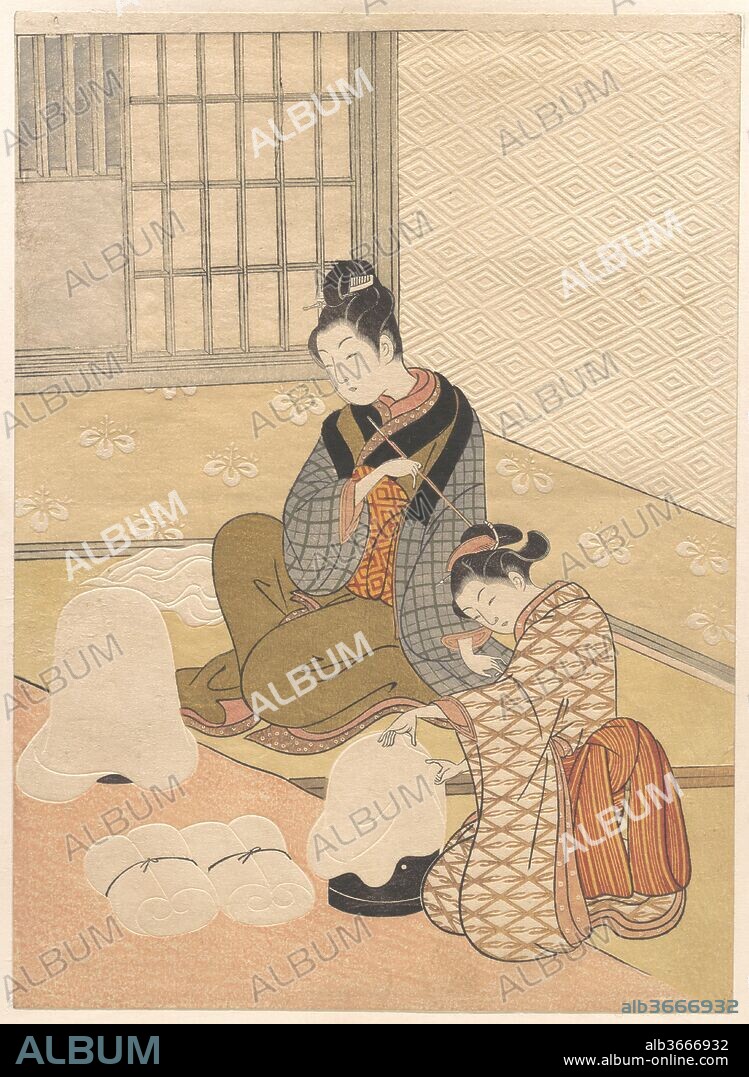alb3666932
SUZUKI HARUNOBU. Evening Snow on the Heater

|
Add to another lightbox |
|
Add to another lightbox |



Buy this image.
Select the use:

Author:
Title:
Evening Snow on the Heater
Caption:
Evening Snow on the Heater. Artist: Suzuki Harunobu (Japanese, 1725-1770). Culture: Japan. Dimensions: 11 1/8 x 8 1/8 in. (28.3 x 20.6 cm)
medium-size print (chu-ban). Date: late 18th century.
The interior scene in this print is fortified by double windows, both a series of bars and shoji sliding panels. The windows, however, are open. One woman, seated and holding a pipe, seems to expect that she will be seen by a man through the gaps and will be able to arrange an assignation.
The other woman is making wadding by stretching sheets of floss silk over the lacquered dome-shaped heaters known as nurioke. Floss silk draped over a nurioke represents the "evening snow" in this print, one of the Eight Views of the Xiao and Xiang Rivers, which originated in China and became popular in Japan. The karazuri embossing technique outlines the shape of the floss silk, emphasizing its softness.
This print is not a first edition: Slight variations in color and patterns on the walls were added, and the seal of the commissioner, Kyosen, was omitted for the commercial product.
Technique/material:
Polychrome woodblock print with embossing (karazuri), ink and color on paper
Period:
Edo period (1615-1868)
Museum:
Metropolitan Museum of Art, New York, USA
Credit:
Album / Metropolitan Museum of Art, NY
Releases:
Model: No - Property: No
Rights questions?
Rights questions?
Image size:
3062 x 4186 px | 36.7 MB
Print size:
25.9 x 35.4 cm | 10.2 x 14.0 in (300 dpi)
Keywords:
 Pinterest
Pinterest Twitter
Twitter Facebook
Facebook Copy link
Copy link Email
Email
